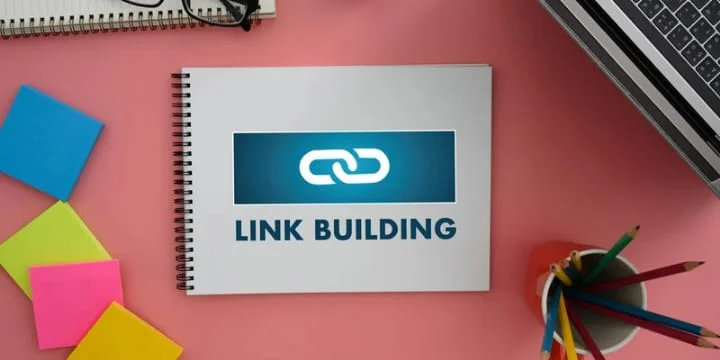Have you ever wondered why some websites seem to effortlessly climb to the top of search engine results while others lag behind? The secret sauce isn’t just what’s happening on the page—off-page SEO plays a crucial role in determining a site’s authority and ranking. In a world where digital presence is everything, understanding and mastering external factors can give your website the competitive edge it needs.
Off-page SEO involves all the activities you do outside of your website to boost its authority and improve its ranking on search engines. This post will dive into proven strategies that can help you enhance your site’s reputation, attract more backlinks, and ultimately, secure a top spot in search results.
Ready to take your SEO game to the next level? Let’s explore these powerful off-page strategies!
Understanding Off-Page SEO and Its Importance

When we talk about SEO, it’s easy to focus on on-page elements like keywords, meta tags, and content optimization. However, off-page SEO is just as vital—if not more so—in determining how search engines view your site. So, what exactly is off-page SEO, and why does it matter?
Off-page SEO refers to all the actions taken outside your own website to impact your rankings within search engine results pages (SERPs). These actions include link building, social media marketing, influencer outreach, and much more. The goal is to create a network of links and mentions that signal to search engines that your site is a trusted, authoritative source.
Here’s why it’s important:
Authority Building: Off-page SEO helps build your website’s authority. Search engines like Google use this authority as a critical ranking factor. The more credible sites that link back to you, the more trustworthy your site appears.
Increased Visibility: High-quality backlinks and social signals can boost your site’s visibility. This means more traffic and, potentially, higher conversion rates.
Trust Signals: Mentions of your brand across the web, particularly from reputable sources, serve as trust signals to search engines. These signals can significantly influence your site’s position on SERPs.
Understanding these aspects of off-page SEO sets the stage for implementing the strategies that follow. Each technique we discuss will build on the principle of enhancing your site’s reputation and authority through external efforts.
Building High-Quality Backlinks
If off-page SEO were a puzzle, backlinks would be the centerpiece. Backlinks, also known as inbound links, are links from one website to another. They act as votes of confidence, telling search engines that your content is valuable and trustworthy. But not all backlinks are created equal—quality trumps quantity every time.
Here’s how you can build high-quality backlinks that boost your site’s authority:

Guest Posting:
- What It Is: Guest posting involves writing content for other websites in your niche. In return, you typically get a backlink to your site.
- How to Do It: Identify authoritative blogs or websites in your industry that accept guest posts. Create valuable, well-researched content tailored to their audience, and include a natural link back to your site.
Content Creation:
- What It Is: High-quality, shareable content attracts backlinks naturally. This could be in the form of blog posts, infographics, videos, or case studies.
- How to Do It: Focus on creating content that solves problems, answers questions, or provides unique insights. Make it easy to share with embedded codes or social share buttons.
Outreach:
- What It Is: Outreach involves reaching out to other website owners, bloggers, or influencers to promote your content or request a backlink.
- How to Do It: Personalize your outreach emails and clearly explain why your content would be valuable to their audience. Be respectful and build relationships, rather than just asking for a link.
Broken Link Building:
- What It Is: This strategy involves finding broken links on other websites and suggesting your content as a replacement.
- How to Do It: Use tools like Ahrefs or Check My Links to find broken links. Reach out to the site owner with a polite message offering your content as an alternative.
Link Reclamation:
- What It Is: Link reclamation involves tracking down unlinked mentions of your brand and requesting the website owner to convert them into links.
- How to Do It: Use tools like Google Alerts or Mention to monitor brand mentions. When you find an unlinked mention, reach out and request a link.
Skyscraper Technique:
- What It Is: The skyscraper technique involves finding high-performing content in your niche, creating something even better, and then reaching out to the sites that linked to the original content.
- How to Do It: Identify popular content using tools like BuzzSumo. Improve upon it—make it more detailed, visually appealing, or up-to-date—and then promote your content to those who linked to the original.
Remember, the key to successful link building is to focus on quality over quantity. A few backlinks from high-authority sites are worth far more than dozens from low-quality sources. Over time, these high-quality backlinks will help solidify your site’s authority and improve your rankings.
Leveraging Social Media for SEO
Social media might not directly influence search engine rankings, but it plays a significant role in amplifying your off-page SEO efforts. Think of social media as the megaphone for your content—it helps you reach a broader audience, which can lead to more backlinks, higher engagement, and better brand visibility.
Here’s how to effectively leverage social media for SEO:

Optimize Your Social Media Profiles
- What It Is: Your social media profiles are often among the first things that show up in search results for your brand name. Optimized profiles can improve visibility and credibility.
- How to Do It: Ensure your profiles are complete, consistent across platforms, and include relevant keywords in the bio or description. Use high-quality images and link back to your website.
Share High-Quality Content
- What It Is: Sharing valuable content on social media can drive traffic to your site, increase engagement, and potentially lead to more backlinks.
- How to Do It: Regularly post content that resonates with your audience, whether it’s blog posts, infographics, or videos. Use eye-catching visuals and compelling captions to encourage sharing.
Encourage Social Sharing
- What It Is: The more your content is shared, the more visibility it gains, which can indirectly influence SEO by attracting links and traffic.
- How to Do It: Add social sharing buttons to your website’s content to make it easy for readers to share. You can also run social media campaigns or contests to incentivize sharing.
Engage with Your Audience
- What It Is: Engagement on social media builds relationships, fosters brand loyalty, and can lead to organic sharing of your content.
- How to Do It: Respond to comments, participate in relevant conversations, and ask questions to encourage interaction. Engaging with influencers and industry leaders can also boost your content’s reach.
Leverage Social Media for Link Building
- What It Is: While social media links are typically “no-follow” (meaning they don’t directly contribute to SEO), the exposure can lead to earned backlinks from other sites.
- How to Do It: Share content on platforms like Twitter, LinkedIn, and Facebook to reach journalists, bloggers, and content creators who might link to your content in their articles.
Use Social Media for Brand Mentions:
- What It Is: Brand mentions on social media can lead to increased online visibility and potential links.
- How to Do It: Track brand mentions using tools like Hootsuite or Sprout Social. Engage with users who mention your brand, and explore opportunities to convert those mentions into backlinks.
Promote User-Generated Content:
- What It Is: Encouraging your audience to create content about your brand can lead to organic mentions and links.
- How to Do It: Run campaigns that ask users to share photos, stories, or reviews of your products or services, and feature this content on your social channels.
By effectively utilizing social media, you can create a ripple effect that amplifies your off-page SEO efforts. While the direct impact on rankings might be minimal, the indirect benefits—like increased traffic, brand awareness, and potential backlinks—are invaluable.
The Role of Influencer Marketing in Off-Page SEO
Influencer marketing is a powerful tool in the off-page SEO arsenal. By partnering with influencers—individuals who have a strong following and influence within a specific niche—you can significantly boost your brand’s visibility, credibility, and backlink profile.
Here’s how to effectively use influencer marketing for off-page SEO:

Identify the Right Influencers
- What It Is: The success of your influencer marketing efforts depends on collaborating with the right people. The influencers you choose should align with your brand’s values and have an audience that matches your target market.
- How to Do It: Use tools like BuzzSumo, HypeAuditor, or Traackr to find influencers in your industry. Look for influencers who have a genuine connection with their followers, a high engagement rate, and content that resonates with your brand.
Collaborate on Valuable Content:
- What It Is: Influencers can create content that features your brand or products, which can then be shared with their audience. This content often includes backlinks to your site, enhancing your SEO efforts.
- How to Do It: Work with influencers to develop content that is both engaging and relevant to their audience. This could be in the form of blog posts, videos, podcasts, or social media posts. Ensure that the content includes a natural, contextual link back to your website.
Leverage Influencer Reviews and Testimonials
- What It Is: Reviews and testimonials from trusted influencers can drive traffic to your site and increase your credibility. These reviews often lead to additional content being created about your brand, generating more backlinks.
- How to Do It: Send your product or service to influencers for an honest review. Encourage them to share their experience with their followers. A genuine, positive review can do wonders for your brand’s reputation and off-page SEO.
Host Giveaways or Contests with Influencers
- What It Is: Giveaways and contests can create a buzz around your brand, leading to increased social shares, brand mentions, and backlinks.
- How to Do It: Partner with influencers to host a giveaway or contest that requires participants to share your content, follow your social media accounts, or visit your website. This not only boosts engagement but can also lead to increased traffic and backlinks.
Influencer Takeovers
- What It Is: An influencer takeover involves having an influencer take control of your social media channels for a day, creating and sharing content on your behalf.
- How to Do It: Select an influencer who aligns with your brand’s voice and values. During the takeover, the influencer can share content, interact with your audience, and drive traffic to your website.
Measure the Impact
- What It Is: Like any marketing strategy, it’s important to measure the success of your influencer marketing efforts.
- How to Do It: Track metrics such as website traffic, social media engagement, and the number of backlinks generated from the influencer’s content. Use tools like Google Analytics and Ahrefs to monitor the impact on your SEO.
By strategically partnering with influencers, you can tap into new audiences, generate high-quality backlinks, and strengthen your brand’s authority online. Influencer marketing isn’t just about brand awareness—it’s a valuable strategy for enhancing your off-page SEO.
Managing Online Reputation and Reviews
In the digital age, your online reputation can make or break your business. Search engines consider a brand’s reputation and customer sentiment when ranking websites. Positive reviews and a strong online presence can boost your site’s authority, while negative feedback can have the opposite effect.
Here’s how to manage your online reputation and leverage reviews for better off-page SEO:

Claim and Optimize Your Business Listings:
- What It Is: Business listings on platforms like Google My Business, Yelp, and Bing Places are crucial for local SEO and reputation management. These listings often appear at the top of search results when users search for your brand or related services.
- How to Do It: Ensure that all your business listings are claimed, complete, and consistent. Include up-to-date contact information, business hours, and a link to your website. Use relevant keywords in your business description to improve visibility.
Encourage Positive Reviews:
- What It Is: Positive reviews are a strong trust signal to both potential customers and search engines. They can improve your rankings and enhance your brand’s credibility.
- How to Do It: Ask satisfied customers to leave reviews on platforms like Google, Yelp, or industry-specific review sites. You can do this via follow-up emails, thank you pages, or social media. Make it easy for customers by providing direct links to your review pages.
Monitor and Respond to Reviews:
- What It Is: Active management of reviews shows that you care about customer feedback, which can positively influence your reputation and rankings.
- How to Do It: Use tools like Google Alerts, Mention, or ReviewTrackers to monitor reviews as they come in. Respond promptly to both positive and negative reviews. For negative reviews, acknowledge the issue, apologize if necessary, and offer a solution. This can turn a negative experience into a positive one and demonstrate your commitment to customer service.
Leverage User-Generated Content:
- What It Is: User-generated content (UGC), like reviews, photos, and videos from your customers, can enhance your credibility and SEO efforts.
- How to Do It: Encourage customers to share their experiences on social media and review sites. Feature this content on your website or social media channels, giving credit to the original creators. UGC can increase engagement and drive more traffic to your site.
Address Negative Reviews and Manage Crises:
- What It Is: No business is immune to negative reviews, but how you handle them can make a big difference in your online reputation.
- How to Do It: When you receive a negative review, don’t ignore it. Respond with empathy, take responsibility where appropriate, and offer to resolve the issue offline. If a crisis arises, act quickly to address it before it escalates. Transparency and prompt action can mitigate damage and show that you value customer feedback.
Build a Strong Online Presence Across Review Sites:
- What It Is: Diversifying your presence across multiple review platforms strengthens your online reputation and makes it easier for potential customers to find trustworthy information about your brand.
- How to Do It: Beyond Google and Yelp, consider industry-specific review sites like TripAdvisor, Trustpilot, or Angie’s List. Regularly update these profiles and encourage reviews from satisfied customers.
Use Reviews in Marketing Campaigns:
- What It Is: Positive reviews can be powerful marketing tools, helping to build trust with potential customers.
- How to Do It: Feature glowing reviews on your website, in email campaigns, or on social media. This not only boosts credibility but also provides fresh content that can be indexed by search engines.
Managing your online reputation and reviews is a continuous process, but the payoff in terms of enhanced authority and improved SEO rankings is well worth the effort. By fostering positive customer interactions and handling feedback with care, you can build a strong, reputable online presence.
Guest Blogging and Content Marketing as Off-Page SEO Strategies
Guest blogging and content marketing are two of the most effective off-page SEO strategies for building authority and driving traffic to your website. These techniques not only help you earn valuable backlinks but also position you as an expert in your field.
Here’s how to leverage guest blogging and content marketing to boost your off-page SEO:

Guest Blogging:
- What It Is: Guest blogging involves writing and publishing articles on other websites or blogs within your industry. This strategy allows you to reach a new audience and gain a backlink to your site.
How to Do It:
- Identify Opportunities: Start by finding reputable blogs that accept guest posts. Use tools like Google search operators (e.g., “your niche” + “write for us”) or platforms like MyBlogGuest to discover opportunities.
- Pitch the Right Content: Before pitching, research the blog’s audience and content style. Your pitch should include a compelling topic that aligns with their audience’s interests. Make sure your proposed article adds value and is not overly promotional.
- Create High-Quality Content: Write a well-researched, informative article that showcases your expertise. Include relevant links back to your website naturally within the content. Focus on providing value to the readers rather than just trying to get a backlink.
- Follow Up: After your guest post is published, engage with the readers by responding to comments. Share the post on your own social media channels to maximize its reach.
Content Marketing:
- What It Is: Content marketing involves creating and distributing valuable, relevant content to attract and engage your target audience. When done well, it can drive traffic, generate leads, and earn you backlinks.
How to Do It:
- Create Link-Worthy Content: Focus on producing high-quality, shareable content that provides in-depth information, unique insights, or practical tips. Examples include how-to guides, case studies, infographics, and research reports. Content that stands out is more likely to be referenced by other websites, earning you backlinks.
- Promote Your Content: Don’t just publish content and hope for the best—actively promote it. Share it on social media, send it to your email list, and use outreach to get it in front of influencers or other bloggers who might link to it.
- Repurpose Content: Extend the life and reach of your content by repurposing it into different formats. For instance, turn a blog post into a video, an infographic, or a podcast episode. This not only helps you reach a broader audience but also creates more opportunities for backlinks.
- Use Data and Research: Content that includes original research or data is particularly attractive to other content creators and journalists, making it more likely to earn backlinks. Conduct surveys, compile industry statistics, or analyze trends and present your findings in an accessible format.
Build Relationships with Other Bloggers and Content Creators:
- What It Is: Building genuine relationships with other bloggers, influencers, and content creators can lead to collaboration opportunities, guest posting gigs, and backlinks.
- How to Do It: Engage with other bloggers by commenting on their posts, sharing their content, and reaching out to collaborate on joint projects. Over time, these relationships can lead to more guest blogging opportunities and mentions of your content on their sites.
Monitor and Analyze Your Efforts:
- What It Is: Tracking the success of your guest blogging and content marketing efforts helps you understand what’s working and where to improve.
- How to Do It: Use tools like Google Analytics to monitor traffic and engagement from your guest posts and content marketing campaigns. Track your backlinks using tools like Ahrefs or Moz to see which content is driving the most links and adjust your strategy accordingly.
By combining guest blogging with a robust content marketing strategy, you can significantly boost your off-page SEO. These efforts not only enhance your site’s authority and rankings but also help you build a strong online presence and connect with a wider audience.
Avoiding Black-Hat SEO Tactics
In the quest for higher rankings and better visibility, it can be tempting to take shortcuts. However, engaging in black-hat SEO tactics—strategies that violate search engine guidelines—can lead to severe penalties, including being de-indexed from search results. Understanding and avoiding these tactics is crucial for maintaining a healthy, sustainable SEO strategy.
Here’s a guide to identifying and steering clear of black-hat SEO practices:

Buying Backlinks:
- What It Is: Purchasing backlinks from other websites to artificially inflate your site’s authority and rankings.
- Why It’s Risky: Google’s algorithms are designed to detect and penalize sites that buy links. These penalties can range from a drop in rankings to a complete ban from search results.
- What to Do Instead: Focus on earning backlinks naturally through quality content, guest blogging, and building relationships with industry influencers.
Participating in Link Farms and Private Blog Networks (PBNs):
- What It Is: Link farms are groups of websites created solely to link to each other and manipulate search engine rankings. PBNs are similar but involve a network of privately owned blogs used to build links to a main site.
- Why It’s Risky: Search engines consider these practices as spammy and manipulative. If caught, your site could face severe penalties, including a drop in rankings or being removed from search results entirely.
- What to Do Instead: Focus on acquiring links from high-quality, relevant websites. Build relationships within your industry and earn links through legitimate content marketing and outreach efforts.
Keyword Stuffing:
- What It Is: Overloading a page with keywords in an attempt to manipulate rankings.
- Why It’s Risky: Keyword stuffing makes content difficult to read and provides a poor user experience. Search engines like Google are adept at detecting this tactic and can penalize sites that engage in it.
- What to Do Instead: Use keywords naturally and strategically. Focus on creating high-quality, user-friendly content that answers the reader’s questions and provides value.
Cloaking:
- What It Is: Showing different content or URLs to search engines than what users see.
- Why It’s Risky: Cloaking is a direct violation of search engine guidelines. It’s considered deceptive and can result in severe penalties, including removal from search engine indexes.
- What to Do Instead: Always show the same content to search engines and users. Focus on optimizing your content so that it ranks well without resorting to deceptive practices.
Using Hidden Text or Links:
- What It Is: Hiding text or links on a webpage by making them the same color as the background, setting their font size to zero, or positioning them off-screen.
- Why It’s Risky: This tactic is considered a form of spam and is easily detected by search engines. It can lead to penalties that hurt your site’s rankings.
- What to Do Instead: Ensure all text and links on your site are visible and accessible to users. Your content should be easy to read and provide a good user experience.
Spamming Blog Comments with Links:
- What It Is: Posting irrelevant or low-quality comments on blogs with the sole purpose of including a link back to your site.
- Why It’s Risky: This tactic is considered spammy and can harm your site’s reputation. Most blog platforms nofollow these links, meaning they don’t pass any SEO value.
- What to Do Instead: Engage in meaningful conversations on relevant blogs. If you include a link, make sure it’s relevant to the discussion and adds value to the conversation.
Abusing Rich Snippets or Structured Data:
- What It Is: Manipulating structured data or rich snippets to mislead search engines or users about the content of your page.
- Why It’s Risky: Search engines take a strong stance against the misuse of structured data, and your site could face penalties if caught.
- What to Do Instead: Use structured data correctly and honestly to help search engines understand your content better. This can improve your visibility in search results without risking penalties.
Avoiding black-hat SEO tactics is essential for maintaining your site’s long-term success. Instead, focus on white-hat SEO practices that adhere to search engine guidelines, provide value to users, and build a solid, reputable online presence.
Tools to Monitor Off-Page SEO Efforts
Effectively managing and optimizing your off-page SEO requires the right set of tools. These tools help you track backlinks, monitor brand mentions, analyze competitors, and measure the overall impact of your off-page SEO strategies. By leveraging these tools, you can make informed decisions and continuously improve your website’s authority and rankings.
Here’s a roundup of essential tools for monitoring your off-page SEO efforts:

Ahrefs:
- What It Is: Ahrefs is a comprehensive SEO tool that excels in backlink analysis, competitor research, and content exploration.
Key Features:
- How to Use It: Use Ahrefs to monitor your backlink profile regularly, identify new link-building opportunities, and track the progress of your off-page SEO efforts.
- Backlink Analysis: Ahrefs provides detailed reports on your backlinks, including the quality and relevance of the linking domains.
- Competitor Insights: Analyze your competitors’ backlink profiles to identify opportunities for your own site.
- Content Explorer: Discover top-performing content in your niche and find potential sites for guest posting or link-building outreach.
Moz Link Explorer:
- What It Is: Moz Link Explorer is a powerful tool for analyzing your site’s backlinks and understanding your domain authority.
Key Features:
- Link Profile Analysis: Get insights into your site’s backlinks, including domain authority, spam score, and anchor text distribution.
- Lost and New Links: Track newly acquired backlinks and identify any lost links that might need recovery.
- Domain Authority (DA): Monitor your site’s DA, a metric that predicts how well a website will rank on search engines.
- How to Use It: Use Moz Link Explorer to maintain a healthy link profile, recover lost links, and monitor changes in your domain authority over time.
SEMrush:
- What It Is: SEMrush is an all-in-one digital marketing tool that offers extensive features for SEO, including backlink tracking and competitor analysis.
Key Features:
- Backlink Audit Tool: Identify potentially harmful links and remove them to avoid penalties.
- Backlink Gap Tool: Compare your backlink profile with that of competitors to find new linking opportunities.
- Brand Monitoring: Track mentions of your brand across the web, even when they’re not linked to your site.
- How to Use It: Utilize SEMrush to audit your backlinks, discover gaps in your link profile compared to competitors, and monitor brand mentions that could be turned into backlinks.
Google Alerts:
- What It Is: Google Alerts is a free tool that notifies you whenever your brand or specific keywords are mentioned online.
Key Features:
- Real-Time Alerts: Receive email notifications whenever your specified keywords are mentioned on blogs, news sites, or forums.
- Brand Monitoring: Track mentions of your brand name, products, or key phrases to find potential backlink opportunities.
- How to Use It: Set up Google Alerts for your brand name, important keywords, and competitor names. Use these alerts to monitor mentions and reach out to authors for potential backlinks.
BuzzSumo:
- What It Is: BuzzSumo is a content research and social media analytics tool that helps you find top-performing content and influencers in your niche.
Key Features:
- Content Discovery: Find the most shared and linked-to content in your industry.
- Influencer Identification: Discover influencers who can help amplify your content and build links.
- Content Alerts: Set up alerts for new content in your niche, brand mentions, or competitor activities.
- How to Use It: Use BuzzSumo to identify content ideas that resonate with your audience, find influencers for collaborations, and monitor competitor content strategies.
Majestic:
- What It Is: Majestic is a specialized SEO tool focused on backlink analysis and link-building strategies.
Key Features:
- Trust Flow and Citation Flow: Metrics that measure the quality and quantity of links pointing to your site.
- Link Context: Understand the surrounding text and context of your backlinks.
- Historic Index: Analyze the history of your backlink profile to track progress and changes over time.
- How to Use It: Use Majestic to dig deep into your backlink profile, evaluate the trustworthiness of linking sites, and identify potential link-building opportunities.
Mention:
- What It Is: Mention is a real-time media monitoring tool that tracks mentions of your brand, competitors, or keywords across the web and social media.
Key Features:
- Real-Time Monitoring: Get instant notifications whenever your brand or keywords are mentioned online.
- Social Media Integration: Monitor mentions across major social media platforms.
- Competitor Tracking: Keep an eye on what people are saying about your competitors.
- How to Use It: Use Mention to stay on top of brand mentions, respond quickly to potential PR issues, and find opportunities for link-building by reaching out to sites that mention your brand.
These tools provide a solid foundation for monitoring and improving your off-page SEO efforts. By regularly tracking your backlinks, monitoring brand mentions, and analyzing competitor strategies, you can stay ahead of the curve and continuously enhance your site’s authority and search engine rankings.
Case Studies of Successful Off-Page SEO Campaigns

Learning from real-world examples can provide valuable insights into how off-page SEO strategies work in practice. By examining successful campaigns, you can better understand which tactics are most effective and how to apply them to your own efforts.
Here are a few case studies of brands that nailed their off-page SEO strategies:
Backlinko’s Skyscraper Technique
- Overview: Brian Dean, the founder of Backlinko, popularized the Skyscraper Technique, which involves creating content that’s significantly better than what’s currently ranking for a particular keyword, then promoting it to earn backlinks.
Strategy:
- Results: Brian used this technique to boost the organic traffic to one of his pages by 110% in just two weeks. The page earned over 300 backlinks from high-authority domains, significantly improving its search engine rankings.
- Takeaway: The Skyscraper Technique is highly effective when executed correctly. It emphasizes the importance of quality content and targeted outreach in earning backlinks and improving off-page SEO.
- Step 1: Identify a piece of content in your niche that has lots of backlinks.
- Step 2: Create something even better—more comprehensive, up-to-date, and visually appealing.
- Step 3: Reach out to the sites that linked to the original content and suggest your improved version as a replacement or an additional resource.
Buffer’s Guest Blogging Strategy
- Overview: Buffer, a social media management tool, grew its user base significantly through an aggressive guest blogging strategy. Instead of just writing for their own blog, Buffer’s team wrote guest posts for well-known blogs in the digital marketing and tech space.
Strategy:
- Step 1: Identify high-authority blogs in the tech and marketing niches that accept guest posts.
- Step 2: Write high-quality, valuable content tailored to each blog’s audience, including a link back to Buffer’s site.
- Step 3: Consistently contribute to these blogs to build relationships and increase visibility.
- Results: Through guest blogging, Buffer not only increased its brand awareness but also gained a large number of high-quality backlinks, driving significant referral traffic and improving its search engine rankings.
- Takeaway: Consistent guest blogging on authoritative sites is a powerful way to build backlinks, drive traffic, and increase brand visibility. The key is to offer valuable content that resonates with the audience of the host blog.
Airbnb’s Social Media and Influencer Marketing
- Overview: Airbnb has leveraged social media and influencer marketing to build its brand and improve its off-page SEO. The company partnered with travel influencers and encouraged user-generated content to create a massive online presence.
Strategy:
- Step 1: Partner with travel influencers who have a large and engaged following. These influencers create content featuring Airbnb properties and share it with their audience, often linking back to Airbnb’s site.
- Step 2: Encourage guests to share their Airbnb experiences on social media using branded hashtags. Highlight these user-generated posts on Airbnb’s own social media channels.
- Step 3: Run social media campaigns that encourage sharing and interaction, further boosting brand visibility and backlinks.
- Results: Airbnb’s strategic use of influencer marketing and user-generated content helped it build a robust online presence, generate backlinks, and improve its search engine rankings. The brand became synonymous with unique travel experiences, largely thanks to its strong social media presence.
- Takeaway: Social media and influencer marketing can significantly boost off-page SEO by driving engagement, building backlinks, and enhancing brand authority. User-generated content, in particular, is a powerful tool for creating organic buzz around your brand.
Moz’s Content Marketing Success
- Overview: Moz, a leader in the SEO industry, has long relied on content marketing to build its brand authority. By creating in-depth guides, tools, and resources, Moz has attracted a large number of backlinks and established itself as a thought leader in the SEO space.
Strategy:
- Step 1: Create comprehensive, evergreen content that addresses the pain points of your target audience. Moz’s Beginner’s Guide to SEO is a prime example, offering a thorough introduction to SEO that has been widely shared and linked to.
- Step 2: Promote the content through various channels, including social media, email newsletters, and SEO forums.
- Step 3: Continuously update and improve the content to keep it relevant and valuable, ensuring it continues to attract backlinks over time.
- Results: Moz’s content marketing strategy has resulted in thousands of backlinks, driving consistent organic traffic and reinforcing its position as an industry leader. The Beginner’s Guide to SEO alone has earned over 1,000 backlinks from high-authority sites.
- Takeaway: High-quality, evergreen content is a cornerstone of successful off-page SEO. When you create content that provides lasting value, it will continue to attract backlinks and drive traffic long after it’s published.
These case studies illustrate the power of targeted off-page SEO strategies in building authority, driving traffic, and improving search engine rankings. By focusing on quality content, strategic partnerships, and consistent outreach, you can achieve similar success in your own off-page SEO efforts.
Key Takeaways

- Focus on Quality Over Quantity: Whether you’re building backlinks, creating content, or engaging with influencers, prioritize quality. High-quality backlinks from authoritative sites are far more valuable than numerous low-quality ones.
- Leverage Content Marketing: Creating comprehensive, evergreen content that addresses your audience’s needs is essential for earning backlinks and establishing authority. Promote this content across multiple channels to maximize its reach.
- Utilize Guest Blogging: Guest blogging on reputable sites is a powerful way to gain visibility and backlinks. Ensure your guest posts are valuable, relevant, and tailored to the host blog’s audience.
- Harness the Power of Social Media and Influencers: Social media platforms and influencer partnerships can significantly boost your brand’s visibility and off-page SEO. Encourage user-generated content to build organic engagement and backlinks.
- Avoid Black-Hat Tactics: Steer clear of black-hat SEO practices like buying backlinks, keyword stuffing, and using link farms. These tactics can lead to severe penalties and damage your site’s reputation.
Monitor Your Efforts: Use tools like Ahrefs, Moz, SEMrush, and Google Alerts to monitor your off-page SEO efforts. Regularly track your backlinks, brand mentions, and content performance to refine your strategies.













